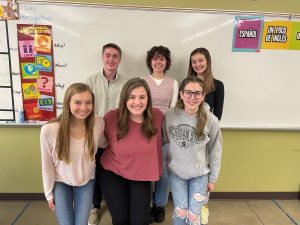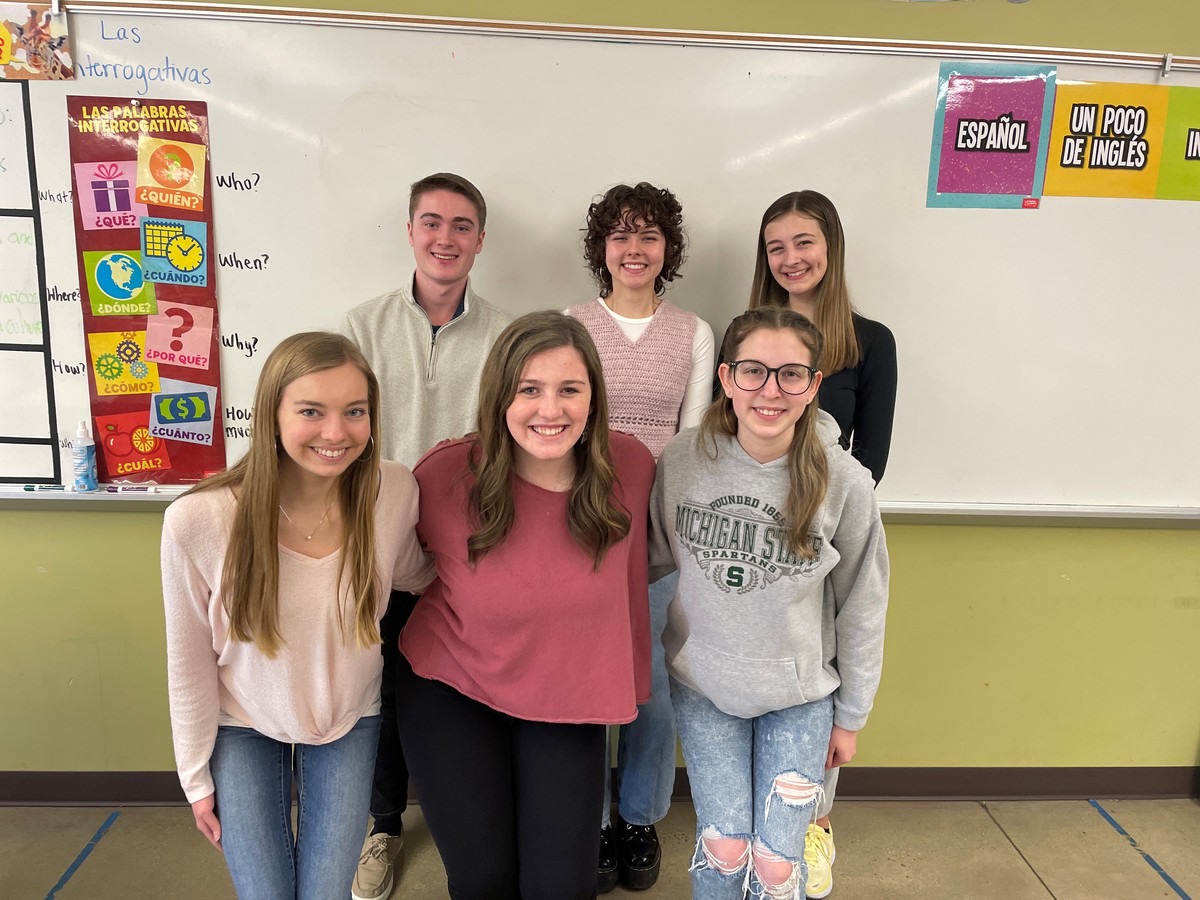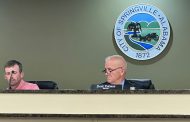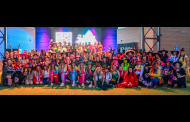By Terry Schrimscher, For the Tribune
TRUSSVILLE – Hewitt-Trussville High School launched its pilot program for the Global Seal of Biliteracy in January and six students have already earned certifications for proficiency in a second language.

Hewitt-Trussville students who have earned the high school’s first biliteracy seals are front L to R: Molly Bruno, Kaitlyn Hardy, Katie Kalchik, and back L to R: Pryce Sewell, Sam McMahon, Ella Grace Young.
“So far, we have piloted the program with students enrolled in AP Spanish Language and Culture,” said Molly Cook, World languages co-department head and Spanish teacher at the high school.
“We have 12 students in that class and tested all of them,” said Cook. “Six of the 12 earned the seal credential.” Cook said some of the other students in the class could still earn the recognition later this semester.
The students who earned the Global Seal of Biliteracy are Molly Bruno, Kaitlyn Hardy, Katie Kalchik, Pryce Sewell, Sam McMahon and Ella Grace Young. The students took the four-hour test Feb. 9. The exam measures proficiency in reading, writing, speaking and listening in the language.
“The plan after this pilot group is to test every spring in levels three, four and AP,” Cook said. She added the purpose of testing is to help students move toward earning the credential but also to get feedback from the test administrators. The feedback will help teachers learn where students can improve in areas of each mode of reading, writing, speaking and listening compared to results nationally and globally.
The Seal of Biliteracy program was approved in Alabama in 2022. Alabama became the 49th state to approve the certification. Hewitt-Trussville enacted the program in January of this year.
“Prior to Alabama adopting it, Vestavia piloted this program, not through the state, they did it through the Global Seal of Biliteracy organization,” Cook said. “When they meet the state standards for earning the seal of biliteracy, they’ve also met the global seal of biliteracy standards for functional fluency.”
The biliteracy program isn’t just for English speaking students taking a world language, students studying English as a second language (ESL) can also attain the certification.
“I really like how it reaches out to kids who are bilingual, who may not even take a foreign language in school,” said Lisa Burroughs ESL teacher at Hewitt-Trussville. “They have the ability to show they have functional fluency in two different languages. They can take the test and add that to their credentials.
“It encourages them to continue to build academic skills in their native language as well as English,” Burroughs added.
Students in the United States must demonstrate proficiency in English along with another language to qualify to participate, except in Hawaii where students are allowed to substitute Hawaiian in place of English.
“When these kids apply for academic scholarships with colleges, they’re competing against other students who also have many recognitions within different extracurricular circles,” Cook said. “This is another way for them to stand out from students who have not incorporated that language learning into their curriculum.”
The Global Seal of Biliteracy website says recognitions like the bilingual seal can help students gain college credits and advanced placement. The organization says it can also help students wishing to study abroad and help them stand out with potential employers or qualify for different pay grades.
Currently, the World Languages department at Hewitt-Trussville plans to offer the test for the seal to students in Spanish, French and Latin. Students who speak other languages can also test in their heritage language if they are fluent in English.








